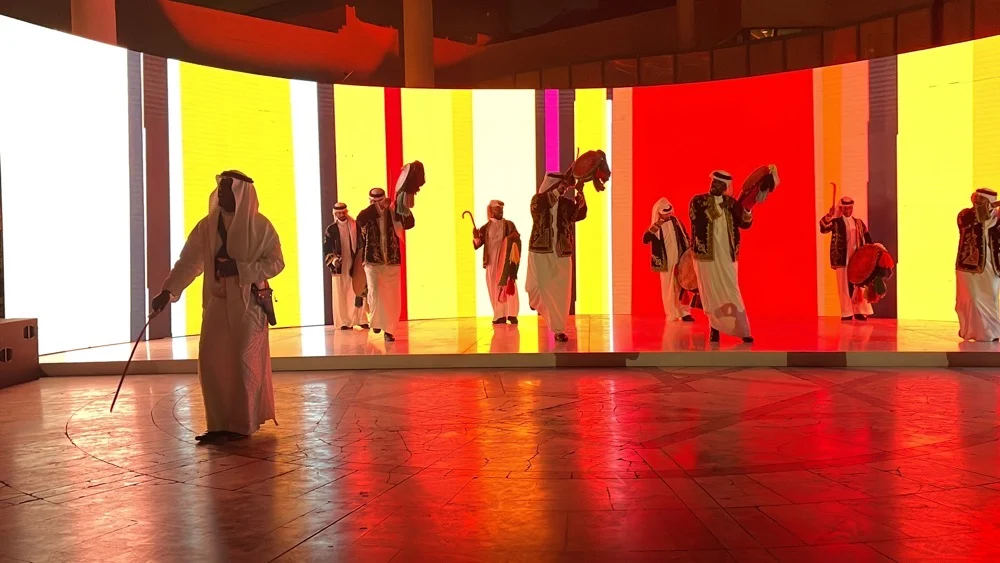RIYADH: While bolstering trade ties and strategic cooperation during President Xi Jinping’s three-day visit to Riyadh, Saudi Arabia and China have also prioritized cross-cultural exchange to help cement the diplomatic relationship.
On the sidelines of Xi’s visit, an event titled “From the East to the East and the Selected Exhibition of Famous Arab Artists Visiting China” was held in the Palace of Culture to showcase the work of Arab and Chinese artists and musicians.
Sponsored by the Saudi Ministry of Culture, the Chinese Ministry of Culture and Tourism, and the Arab League, in cooperation with the Saudi Ministry of Information, the event featured a traditional Ardah performance and a Chinese dance routine.

With the faint sounds of the Chinese musical strings of the zheng, the Arabic version of the string instrument, the qanun, and the oud, a trio of Saudi and Chinese performers created a unique fusion of sounds.
Since 2009, more than 170 well-known artists from 21 Arab countries have been invited to visit the People’s Republic by the Ministry of Culture and Tourism of China. The artists turned what they saw, felt and thought into more than 500 paintings, sculptures and ceramic works.
The exhibition features 40 of these works by an assortment of Saudi, Libyan, Algerian, Palestinian, Egypian, Bahraini, Iraqi and Jordanian artists alongside works by Chinese artist who visited Arab countries.
It features Chinese paintings of Manama and Amman, and one of an Egyptian man with a camel, decorated with colorful strings and bells, against the iconic backdrop of the Pyramids of Giza.
Influences of the ancient Silk Road were also evident in several of the artworks and large screens covering the walls showing Chinese and Arabic calligraphy and heritage objects.

The exhibition was organized by Bauhinia Culture Holdings Limited, executed by China Arts and Entertainment Group Ltd., supported by the China Artists Association.
A live art show also took place, highlighting the distinctive architecture of the Great Wall of China and Diriya’s Salwa Palace.
“I found similarities in the way rock and stone was used here and in my country,” Chinese painter Wang Haikun told Arab News.
“These similarities prompted me to apply it to my side of the mural as a symbol of our unity.”





























